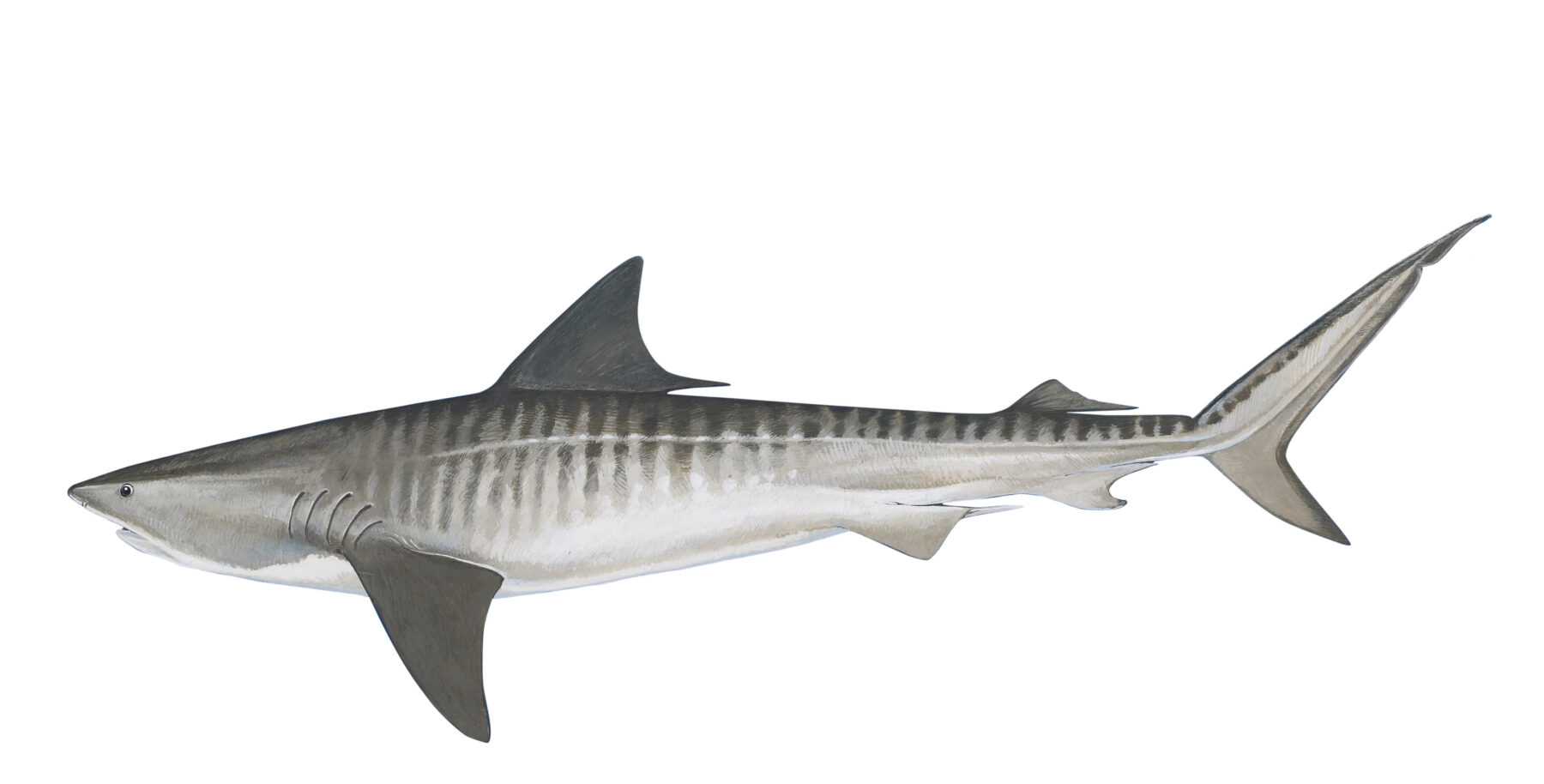| Common name | Tiger shark |
| Scientific name | Galeocerdo cuvier |
| Type | Fish |
| Diet | Carnivorous, eating a range of fish and marine life including rays, turtles, and dolphin calves |
| Average lifespan | Between 20 and 50 years |
| Size | Up to 6 metres in length, weighing in at up to 520kg |
A reputation for not being the friendliest of fish species, the tiger shark ranks number two, after the great white, for being responsible for the most recorded attacks on humans.
One of the larger sharks to peruse the sea, this shark is a scavenger by nature and feeds in shallow water, making it dangerous to humans who enjoy an ocean dip – although fatalities from shark bites are still considered rare.
Named after the dark, vertical stripes that cover its sides and back, this distinguishable feature of the shark typically fades as it ages.

This mighty shark has a broad, blunt head which plays host to a series of sickle-shaped teeth that are similar in both the upper and lower jaw.
With a slender body that easily slips through the water, the tiger shark has an angular, hooked tail that helps it to manoeuvre quickly to catch fast prey.
Equipped with a sophisticated sensory system, the shark has excellent eyesight and a highly developed sense of smell and taste and can even detect electricity.

Making its home in tropical and sub-tropical waters worldwide, the tiger shark will visit temperate waters seasonally. Within Australia, the shark is known to frequent waters from Windy Harbour in south western Western Australia, around the tropical north and down the east coast until the southern coast of New South Wales.

Showing a wide tolerance for different marine environments, the tiger shark may swim between shallow coastal waters and deep oceanic habitats but prefers turbid waters on or near the continental and insular shelves.
When it comes to catching a bite, the tiger shark is on the move during the night-time hours, moving inshore to shallow waters to feed nocturnally, then moving back out to deeper water when daylight arrives.
With a hugely varied diet, the tiger shark doesn’t discriminate when it comes to its prey and are known predators with a voracious appetite. From turtles, molluscs and seabirds to sea snakes, seals and fish in all shapes and sizes, this shark has also been known to feast on human rubbish.
Consummate scavengers, tiger sharks have highly attuned senses, sharp serrated teeth, and powerful jaws, making them a threat to most marine life that share their waters. Sometimes referred to as the Trash Cans of the Sea, these shark will eat just about anything and will hunt and devour prey just for fun, even when they’re not hungry.


Scientists have discovered a wide range of strange items inside the stomachs of these eager eaters, including pieces of boats and ships, tires, oil cans, clothing and even books.
Naturally aggressive, the tiger shark won’t hesitate to attack if it feels threatened. Unlike the great white shark, which has a disdain for human flesh, the tiger shark isn’t so picky and will likely stick around and finish the job if it happens to take a bite out of an unlucky human.

Giving birth to live young, the tiger shark produces a large litter of offspring numbering between 10 and 82 pups about once every two years, after a 12–16 month gestation period. Pups are slender at birth with clearly defined vertical ‘tiger’ stripes and are between 51–76cm in length.
The shark species is slow to grow and mature, making it vulnerable to declines in population numbers from overfishing. With lower levels of mercury in their bodies than other shark species, the tiger shark is harvested in large numbers for their fins, skin and flesh, and is listed as near threatened.










